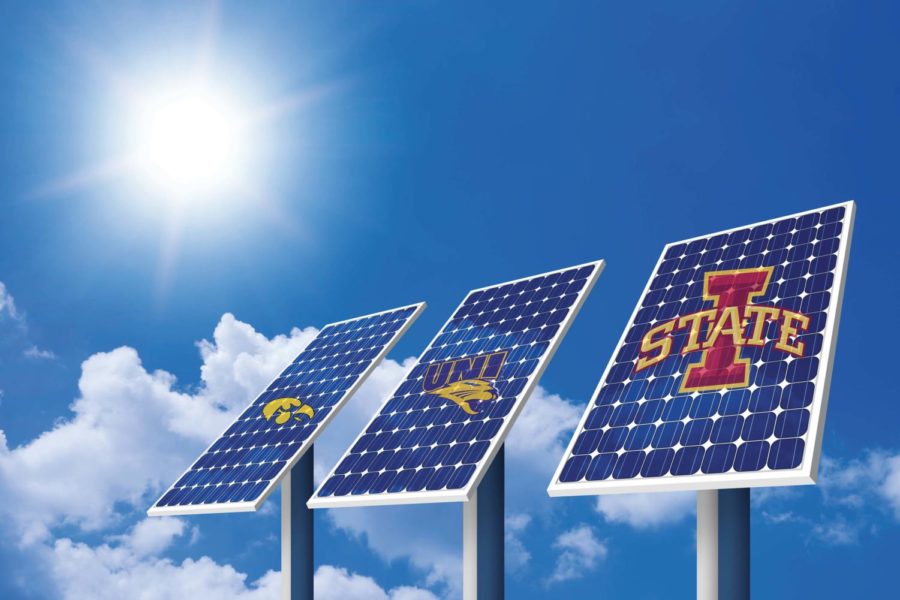National Science Foundation is rewarded
Graphic: Kelsey Kremer/Iowa State Daily
Cystainability
September 28, 2011
Iowa State University, the University of Iowa and the University of Northern Iowa are working together with community colleges, private colleges and K-12 schools to conduct the research of Iowa’s capacity in renewable energy and energy efficiency.
Dr. Robert C. Brown, project manager, tells us he hopes to build capability of young staff to equip labs and conduct work in the future for students. The project will be an ongoing learning experience for all of the staff and faculty involved. However, over the course of five years, Brown hopes to see young faculty take this research to build their careers.
To assist faculty in the research process, there is a program called Future Leaders in Advancing Renewable Energy. This program will help develop careers of junior faculty in renewable energy fields and increase women, and under-represented minorities and first-generation college students’ participation. The goal is to initially meet the needs of Iowa’s visible desire to become a green economy.
FLARE will be built on four major platforms: bioenergy, wind energy, energy utilization, and energy policy. Two of the platforms, bioenergy and wind energy, will have research assistance through outdoor labs. Brown goes on to explain their goals of moving from the geosphere to the biosphere, harnessing energy flows. Their only worry, damaging the surface of our earth.
“We are obviously going to effect the surface, we just want to be sure we have a positive effect on earth’s surface to be successful in our research,” Brown stated. Other goals include wind monitoring, they want to be able to see how often it blows, average intensity, what types of wind gusts could damage wind turbines and attempt to predict when the wind will blow.
While partnering with kindergarten through 12th grade seems a bit of a stretch, the concept is brilliant. If they can bring awareness to young students early in the game, perhaps come graduation, more will consider the science, technology, engineering and math in higher education. Thus giving a great possibility of further research in the program’s vision to establish Iowa as a leader in the worldwide transition from fossil fuels to renewable energy sources.







